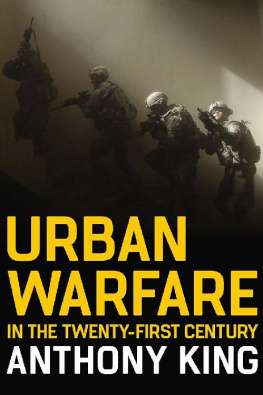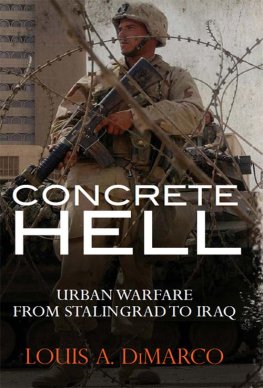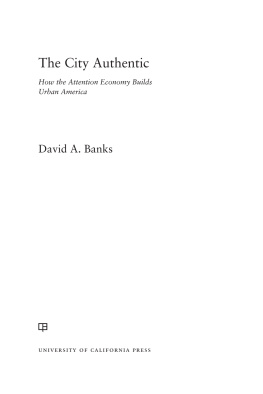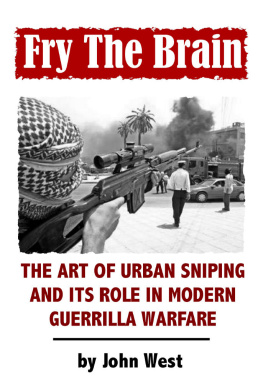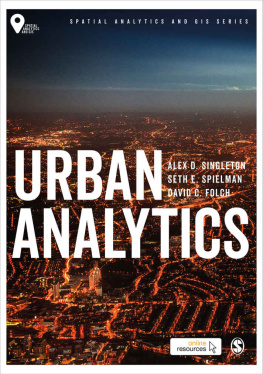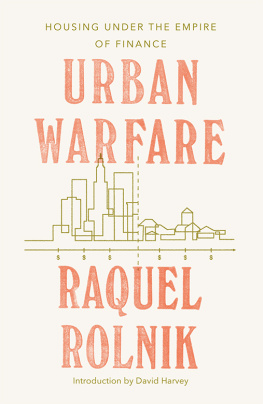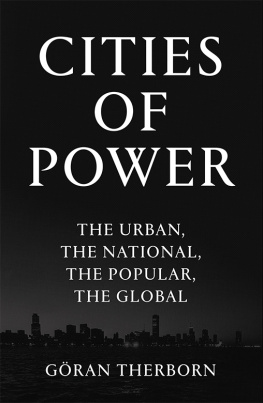Copyright Anthony King 2021
The right of Anthony King to be identified as Author of this Work has been asserted in accordance with the UK Copyright, Designs and Patents Act 1988.
First published in 2021 by Polity Press
Polity Press
65 Bridge Street
Cambridge CB2 1UR, UK
Polity Press
101 Station Landing
Suite 300
Medford, MA 02155, USA
All rights reserved. Except for the quotation of short passages for the purpose of criticism and review, no part of this publication may be reproduced, stored in a retrieval system or transmitted, in any form or by any means, electronic, mechanical, photocopying, recording or otherwise, without the prior permission of the publisher.
ISBN-13: 978-1-5095-4367-0
A catalogue record for this book is available from the British Library.
Library of Congress Cataloging-in-Publication Data
Names: King, Anthony, 1967- author.
Title: Urban warfare in the twenty-first century / Anthony King.
Description: Cambridge, UK ; Medford, MA : Polity Press, 2021. | Includes bibliographical references and index. | Summary: An outstanding interdisciplinary introduction to urban warfare in the contemporary world-- Provided by publisher.
Identifiers: LCCN 2020053371 (print) | LCCN 2020053372 (ebook) | ISBN 9781509543656 (hardback) | ISBN 9781509543663 (paperback) | ISBN 9781509543670 (epub)
Subjects: LCSH: Urban warfare--History--21st century. | Metropolitan areas--Strategic aspects. | Siege warfare--History.
Classification: LCC U167.5.S7 K56 2021 (print) | LCC U167.5.S7 (ebook) | DDC 355.4/26--dc23
LC record available at https://lccn.loc.gov/2020053371
LC ebook record available at https://lccn.loc.gov/2020053372
The publisher has used its best endeavours to ensure that the URLs for external websites referred to in this book are correct and active at the time of going to press. However, the publisher has no responsibility for the websites and can make no guarantee that a site will remain live or that the content is or will remain appropriate.
Every effort has been made to trace all copyright holders, but if any have been overlooked the publisher will be pleased to include any necessary credits in any subsequent reprint or edition. The author and publisher would like to thank the following for permission to use copyright material: Figure 3.1 from Castle, The Journal of the Royal Anglian Regiment ; Map 1.1 and Map 5.3 from the Institute for the Study of War; Map 2.3 from The Map Archive; Map 3.1 from Geografski vestnik ; Map 11.1 from Army University Press; and Map 2.2 and Map 8.1 from Cobra II: The Inside Story of the Invasion and Occupation of Iraq by Michael R. Gordon, copyright 2006, 2007 by Michael R. Gordon and Bernard E. Trainor. Used by permission of Pantheon Books, an imprint of the Knopf Doubleday Publishing Group, a division of Penguin Random House LLC. All rights reserved.
For further information on Polity, visit our website: politybooks.com
Preface
I cannot remember precisely when it was. It may have been in 2001 or 2002, or it might have been in 2004 or 2005, after I had already started to work on the armed forces. However, the memory itself remains quite distinct. In my first years at Exeter University my office was directly opposite that of Barry Barnes, who held the professorial chair of the department. I was very lucky. Our proximity in the department was congenial and instructive for me. As an eminent sociologist, Barry was a very fine mentor and friend. I met Barry frequently, as a result, and we talked about many things, including sociology and social theory. In one of those conversations, as was common, he invited me into his room and, as we chatted, he showed me a small, yellow booklet, the reading list from an old course on Social Order which he had taught at Edinburgh. On the cover of this booklet was the photocopy of an engraving of a late fifteenth- or early sixteenth-century siege, in which cannon had breached a wall, while soldiers attacked a gate as defenders poured burning oil upon them. Barry motioned excitedly at the image and cried: Look at all the social stuff going on there. His point was, of course, that once humans were able to form social groups and cooperate with each other, there was almost no limit to their powers for good or ill.
I would like to say that, from the moment I saw that image, I decided to take Barry up on his challenge and to write a sociology of urban warfare. Yet, that would not be true. I remembered the image and Barrys exhortation as a general lesson about sociological analysis, not as an injunction to write a particular book. The idea of a book on urban warfare only came much later as I was finishing my book on command in 2018. At this point, British and American and, indeed, Western armed forces generally were beginning to think seriously about urban operations. Their concerns about the increasing likelihood of urban operations, as well as their intense experience of them over the previous decade or more, attracted my interest. I had, in fact, written about urban tactics in The Combat Soldier , published in 2013. However, Barrys image of that early modern siege became increasingly significant to me as I researched urban warfare. So in the end, this book might be read as a circuitous answer to Barrys challenge. It is a sociology of urban warfare; it is an attempt to show how the changing size and density of military forces and cities, as social groups, have reconfigured the urban battle in the twenty-first century. I do not mention the work of mile Durkheim in this book anywhere. Yet, for anyone who knows his work, its influence on my thinking about urban warfare past, present and future should be obvious.
As always, many friends and colleagues helped me with this book. I am grateful to them all. I offer special thanks to the following. I could not have conducted the military research I have without the support of the British Army and the Royal Marines, and especially 40 and 45 Commando Royal Marines. I am personally grateful to: Ben Baker, James Bashall, Jules Buczacki, Matt Cansdale, Alec Case, Innes Caton, James Cook, Kevin Copsey, Mike Cornwell, Gerry Ewart-Brookes, Adam Fraser-Hitchen, Paddy Ginn, Stephen Greenberg (USMC), Paul Hammett, Sigolene Hobson, Rupert Jones, James Martin, Nick McGinley, Charles Jack Nicholson, Nick Perry, Jamie Powell, Dan Reeve, Clo ONeill, Dom Rogers, Simon Rogers, Dickie Sernberg, Jolyon Simpson, Al Speedie, Zac Stenning, Andrew Stuart and Matt Taylor. Stephen Bowns, Peter Dixon, Robert Goodin and the Royal Anglian Regiment were extremely generous in their support for my research on Belfast in 1972 and the permission to use some images. I would also like to thank Ben Barry, Virginia Comolli and Antonio Sampaio at the International Institute for Strategic Studies; Marcus Geisser at the International Committee of the Red Cross; and James Denselow at Save the Children. At Warwick, Jon Coaffee and Stuart Elden provided very useful guidance, as did Randall Collins and Jeremy Black.
The US Army was no less helpful. At West Point, the Modern Warfare Institute has provided invaluable support, especially John Spencer (who has been particularly kind), John Amble, Liam Collins and Noel Siosson. I am indebted to Doug Winton not only for some fascinating conversations but also for allowing me pre-emptively to read his excellent doctoral dissertation on urban warfare, which I look forward to seeing in print and which I would recommend to everyone interested in the topic. I am very grateful also to Sean MacFarland, Joseph Martin, Joe OCallaghan and Danilo Pamonag (Filipino Army) for their time and insights. At NATO, Jeff Biddiscombe, Frode Rieger, Simon Thomsett and Jan van der Werf were very helpful.

